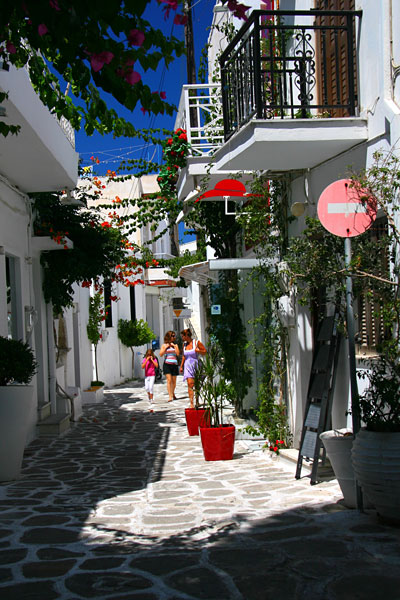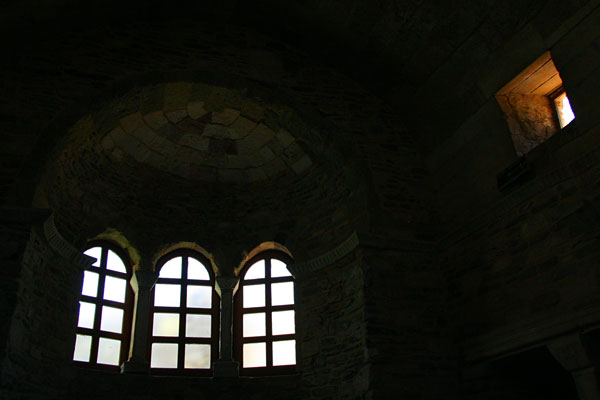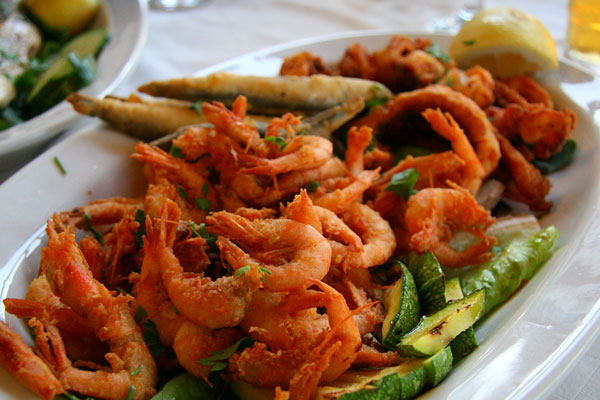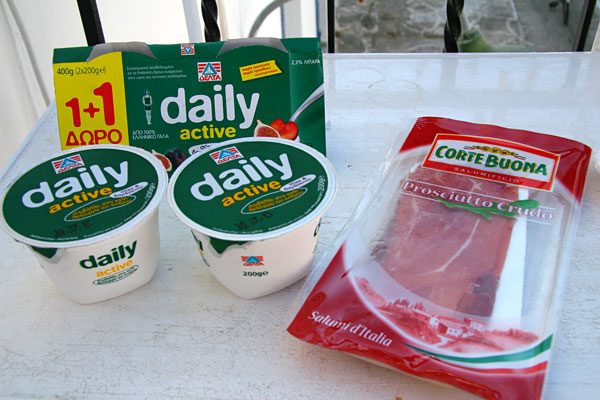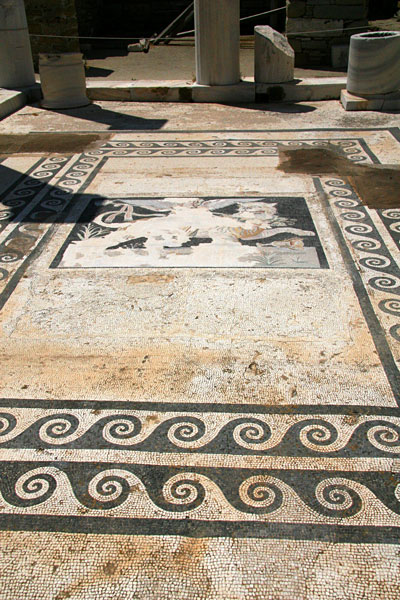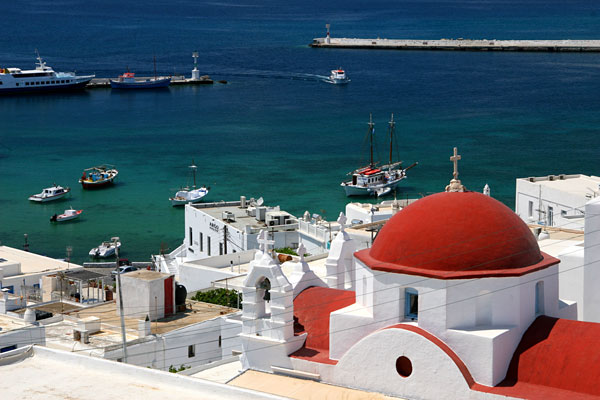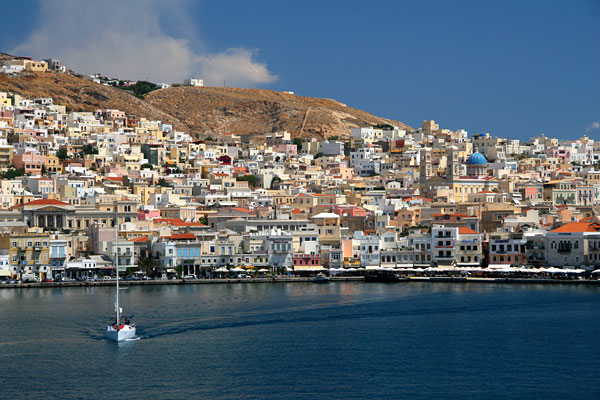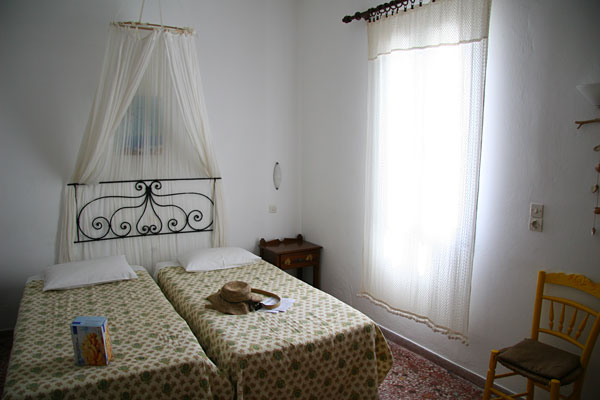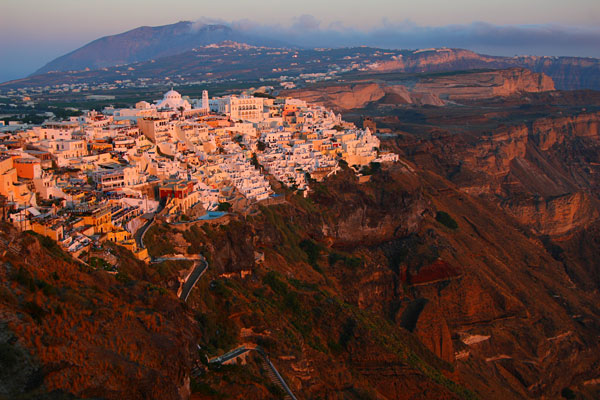
Like most first-time visitors, I met my first sight of Santorini's caldera with a deep breath and a sigh, followed by a slight feeling of vertigo as I glanced down at the sheer 300m drop underfoot. Then common sense took over and the next thought was, what kind of crazy people would burrow an entire town into the vertical rim of an active volcano?

Perhaps a more relevant question at the time would have been ... what kind of crazy traveler would pay hundreds of Euros for the hazard of staying at such a precarious location? Well I signed up, and so do thousands of other visitors everyday of the year. When you're presented with one of the world's most breathtaking views, common sense just goes out the window. You accept that miniscule chance of freefalling down the cliff when you behold the enchanted beauty you're powerless to take your eyes off.

Let your eyes roam with skyline of the volcano, and you'll see a long series of towns and villages along the caldera's lip. Aerosmith's Living On The Edge comes to mind -- you can hardly live any more dangerously than this. One major earthquake or eruption -- and bear in mind that this is a volcano with a particularly violent history -- could send the whole town tumbling down into the deep blue abyss of the flooded caldera.
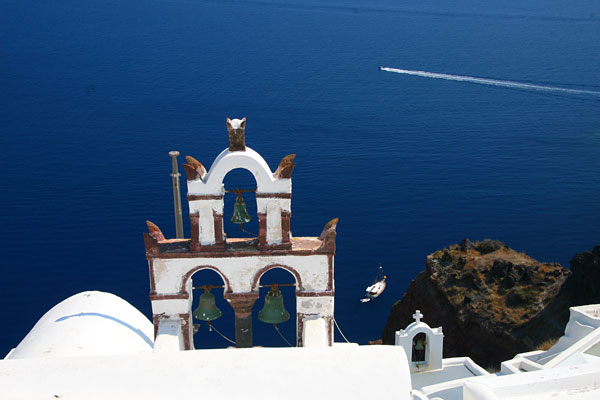
Something so beautiful and alluring, and yet so fragile. Everyone knows it's only a matter of time until the next major earthquake, the last occurring as recently as 1956 and destroying half of her towns. But there is something universally appealing about this -- this is why Italians love La Traviata, or why the Japanese love Hanami in springtime. It's the fateful tragedy of a frail protagonist, perishing at the absolute height of her beauty.
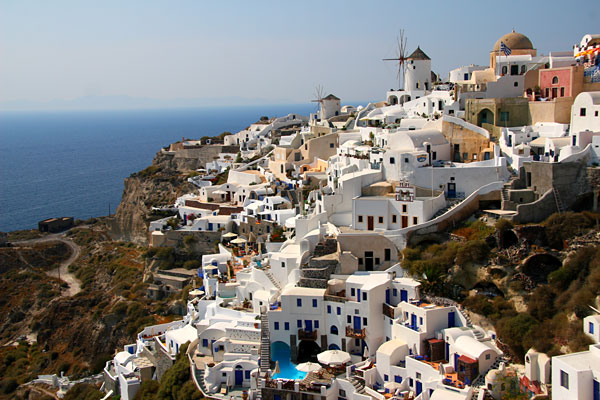
Santorini is certainly no stranger to that storyline. In her previous life incarnation the island once thrived as one of the most advanced centers of civilization in the ancient world. Her engineers constructed multi-storey apartments while the inhabitants enjoyed the comfort of separate hot and cold water piping into their homes. The remains of that civilization can still be found at the remote village of Akrotiri at the south end of the island, a testimony to a golden age that ended abruptly one day, some 3600 years ago, when the then-circular island blew itself up.

It was a catastrophe of legendary proportions. Skies blackened for months as far away as China, where a volcanic winter was thought to have caused the overthrowing of the Xia Dynasty. Closer to home the seismic activity accelerated the downfall of the mighty Minoans. As for the island itself, the volcano blew a massive hole out of the centre of the island, the crater floor collapsed, and the glorious civilization was swallowed by the sea.

This was the myth behind Plato's Atlantis according to some researchers, adding to the romance of modern Santorini. All that is left today is the jagged rim of the caldera, protruding out of the Aegean Sea in the shape of a crescent moon. Ominous plumes of smoke are still occasionally seen rising from the newer islands forming out of the underwater crater, but to the island's modern day locals that's just a fact of life.

Several millennia removed from ancient Atlantis, locals and visitors alike have embraced Santorini's current incarnation as the top island destination in the world, as often crowned by travel magazines. Where else could combine the natural wonder of an active volcano, the aesthetics of Greek windmills, the panoramic scenery of the blue Aegean, and the utter irrationality of cave dwellings burrowed into a caldera's cliff? There is only one Santorini in the world, and we wanted to take in as much of it as we could within a four day span.

Atop our wishlist was a cliff-side room with a caldera view, and that means our accommodation options were limited to the several villages situated along the rim of the caldera. Fira, the commercial centre of the island, was the obvious choice with its excellent transportation network. A little further along the caldera were the quieter villages of Firostefani and Imerovigli, located 30 minutes walk (or a quick bus ride) away from Fira. Then there's the popular village of Oia tucked away at the remote north end of the island, a 30 minute bus ride away.

Taking the advice of the locals we stayed in the island's cosmopolitan centre, the whitewashed, cliff-side town of Fira. While it's certainly the most expensive town to stay in, the convenience of its bus transportation hub (1.4 to 2 Euros per trip to all corners of the island) gave us easy access to explore the island's charming but underrated remote villages. There's a Marinopoulos (ie. Greece's Carrefour) supermarket at the southeast corner of the town to pick up picnic items, drinking water and even local wine. Locally grown produce (e.g. Santorini's famous mini tomatoes) could be found at a small grocer on the main road. And there's a laundry place on the main road just north of the bus station, charging only 10 Euros for washing, drying and folding a couple kilograms of our dirty clothes. That's all the basics a traveler needs.

We also found the town of Fira to be a decent choice for food as there are a few excellent places within walking distance for reasonably priced local dishes. While we did encounter restaurants that overcharged, as one would expect in most tourist towns, some good deals could still be found right in the middle of the town. I have to write a proper restaurant review article later.

While Fira itself is small enough to be walked in one afternoon, there are enough side-trips within the island to satisfy the curious traveler for days. Like most visitors we did spend an afternoon at the village of Oia, enjoying its charming windmills, walking down to the little fishing port of Amoudi for seafood, then hiking back up for its internationally-famous sunset. The entire village was packed with sunset watchers though, and we could hardly stake a spot on the side of the path without rubbing shoulders with other tourists. It was more of a lively, festive atmosphere than a serene moment with nature, and needless to say we didn't enjoy that part very much.

My favorite half-day trip was to take a short bus ride to Imerovigli and wandering slowly back towards Fira. While the straight-line distance is only about 3 km, the gorgeous views of the caldera and the traditional architecture kept us lingering at every corner. There's also a path down to the ruins of a Venetian castle on a headland jutting out towards the sea. The cliff-side path between Imerovigli and Firostefani was also our favorite spot to watch that romantic Aegean sunset, as pictured above. IMHO this was certainly better than the self-proclaimed "best sunset in the world" at Oia. Besides, we found our favorite restaurant on this island at Firostefani.
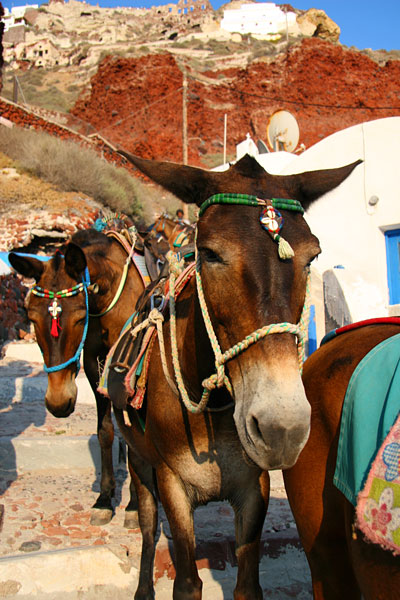
We couldn't resist the mule/horse ride from the old port up to the town of Fira. Patrons had a choice to ride downhill or uphill, and we elected to take the cable car (4 Euros) down and the mule (5 Euros) up, according to advices from past visitors who mentioned the horror of galloping down the zigzag path on an uncontrollable free-rein mule, negotiating a rock wall on one side and a vertical drop on the other. That unsafe practice has since completely reversed, and now the mules are free to carry the rider uphill, before being slowly led downhill in a caravan formation by the handler. I still think going uphill is the better option on mule back, as the animals often stray too close to the edge of the cliff for my comfort.

We spent our final afternoon on Santorini exploring some of the small traditional villages in the interior of the island, which I'll cover in the next article, before taking the overnight ferry to the island of Rhodes. For us four days were just barely enough on this paradise of an island, and if we had a fifth day we would probably have taken the boat to the lava dome island of Nea Kameni to take a mud bath in its hotsprings. But then there are just too many beautiful islands to visit on one trip, and Symi and Rhodes were certainly worthy of our time as well.
ACCOMMODATION
Hotel Review: HOTEL KETI (Fira, Santorini)
Address: Agiou Mina, Fira, Santorini
Price: 90 Euros
Website/Map: http://http://www.hotelketi.gr
How To Book: Through official site
Directions: Starting from Fira's Metropolitan Cathedral, face the cliff and walk left. Turn right at the first alley and walk towards the cliff. Hotel Keti is right at the next intersection, on an alley called Agiou Mina, which is parallel with the cliff.

I've been waiting to write this review. This is, very simply, the most memorable hotel of our trip. While it was also the most expensive at 90 Euros per night, I have to say it was worth every single cent.

Imagine waking up every morning to this gorgeous view, a cascade of whitewashed mansions stretching for miles along the volcano's rim, all the way to the village of Imerovigli and beyond. And in case you've lost sight of how high in the clouds the hotel is, the old mule path zigzagging 300 metres down to the harbor puts it all in perspective.
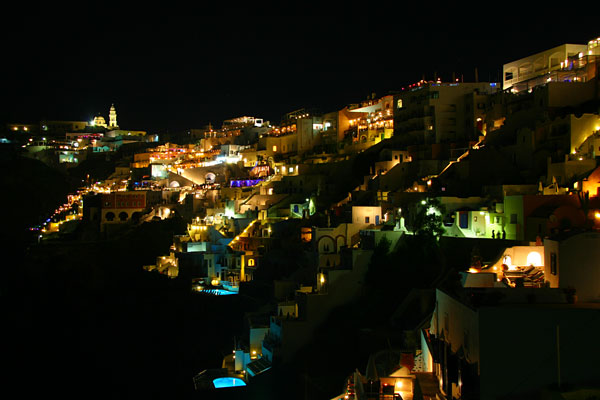
And if you're not a morning person, the night scenery from the balcony is equally spectacular. With the neighboring pool-lit hotels generally charging more than 250 Euros per night, you can see why Hotel Keti is such a great deal. In fact I'm quite indebted to a fellow backpacker who referred me to this hotel, and I'm just passing on the favor here.

We must have spent countless hours leaning against these balustrades, just pulling up our lounge chairs and enjoying the panoramic scenery. From this height one can glance down all the way to the southern end of the crescent-shaped island, as well as the barren lava dome formed at the centre of the volcanic crater.

Our guestroom was practically a cave tunneled into the cliff side in typical Santorini fashion. Though the amenities were simple, everything was spotlessly clean and the bathroom was quite recently renovated. Not that we spent much time indoors anyway, with such stunning views awaiting all around. The only drawback was its burrowed location underneath the cobblestone path utilized by teams of pack mules and horses, which could be noisy a few times a day.

This was of course our best breakfast view ever. I can't say enough great things about this little family-run hotel. Friendly service, good restaurant recommendations, superb location, all at a relative bargain price as far as caldera-view hotels go. Three nights were too short.
